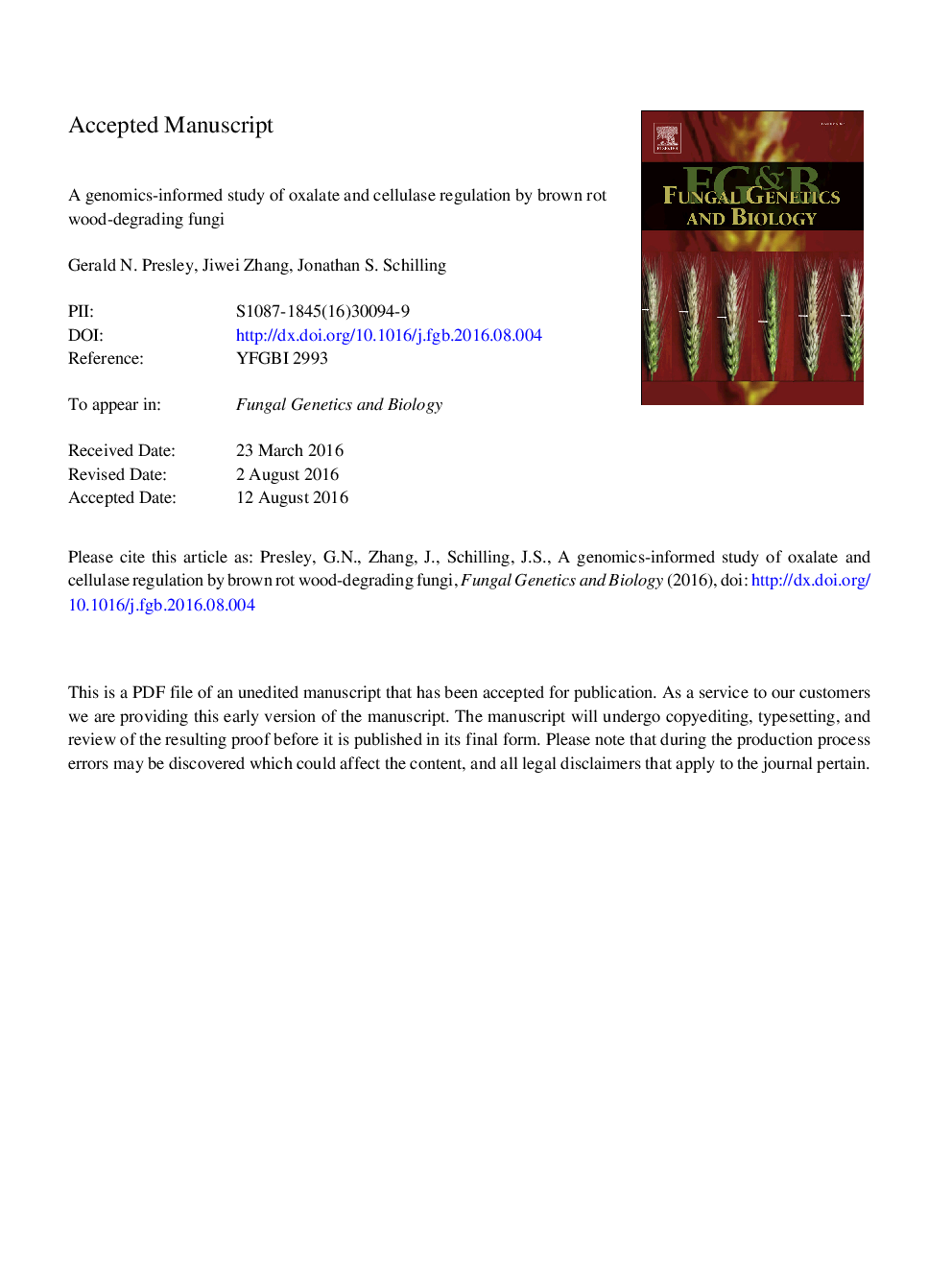| کد مقاله | کد نشریه | سال انتشار | مقاله انگلیسی | نسخه تمام متن |
|---|---|---|---|---|
| 8470449 | 1549979 | 2018 | 29 صفحه PDF | دانلود رایگان |
عنوان انگلیسی مقاله ISI
A genomics-informed study of oxalate and cellulase regulation by brown rot wood-degrading fungi
ترجمه فارسی عنوان
یک مطالعه ژنتیکی آگاهانه از تنظیم اکسلات و سلولاز توسط قارچ های پوسیدگی قهوه ای از بین می رود
دانلود مقاله + سفارش ترجمه
دانلود مقاله ISI انگلیسی
رایگان برای ایرانیان
کلمات کلیدی
موضوعات مرتبط
علوم زیستی و بیوفناوری
بیوشیمی، ژنتیک و زیست شناسی مولکولی
بیولوژی سلول
چکیده انگلیسی
Wood-degrading fungi that selectively remove carbohydrates (brown rot) combine Fenton-based oxidation and enzymatic hydrolysis to degrade wood. These two steps are incompatible in close proximity. To explain this, brown rot fungi may stagger oxidative reactions ahead of hydrolysis, but the scale and environmental controls for such a mechanism have not been resolved in solid wood. Here, we focused on one reaction control parameter, oxalate. In coordination with Fe3+-reducing compounds (e.g., 2,5-dimethoxyhydroquinone), oxalate can either promote Fenton chemistry by mobilizing Fe3+ as mono-oxalates (facilitative) or inhibit Fenton chemistry (protective) by restricting reducibility and the formation of Fenton's reagent as Fe3+/Fe2-(oxalate)2,3. Here, we sectioned wood wafers colonized directionally by Postia placenta and Gloeophyllum trabeum to map end-to-end the expression of oxalate synthesis genes and to overlay enzyme activities, metabolites, and wood modifications. Near advancing hyphal fronts, oxaloacetase expression was up upregulated for both fungi, while regulation patterns of paralogous of isocitrate lyases and glyoxylate dehydrogenases varied, suggesting different physiological roles. Oxalate decarboxylase (ODC) expression in G. trabeum was induced in more decayed wood behind the hyphal front, but was constitutively expressed in all P. placenta sections. Relative ODC activities increased and oxalate levels stabilized in more decayed wood behind the hyphal front. Endoglucanase (EG) activity, on the other hand, peaked for both fungi in later decay stages. These oxalate optimization patterns are in line with previous whole-block 'spiking' experiments tracking oxalate, but we provide here information on its genetic controls across a spatial gradient. As a complement, we also demonstrate in vitro the plausibility of a protective role for oxalate, to emphasize that these fungi might be optimizing oxalate at a given level to maximize Fenton reactions but to minimize oxidative damage.
ناشر
Database: Elsevier - ScienceDirect (ساینس دایرکت)
Journal: Fungal Genetics and Biology - Volume 112, March 2018, Pages 64-70
Journal: Fungal Genetics and Biology - Volume 112, March 2018, Pages 64-70
نویسندگان
Gerald N. Presley, Jiwei Zhang, Jonathan S. Schilling,
